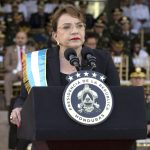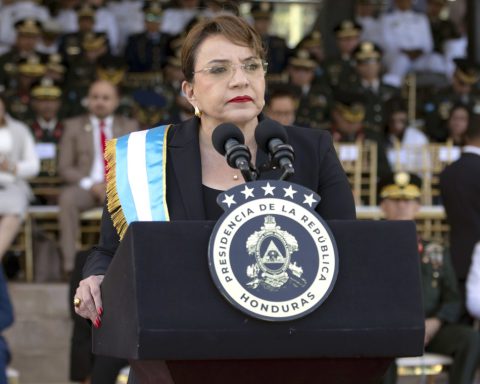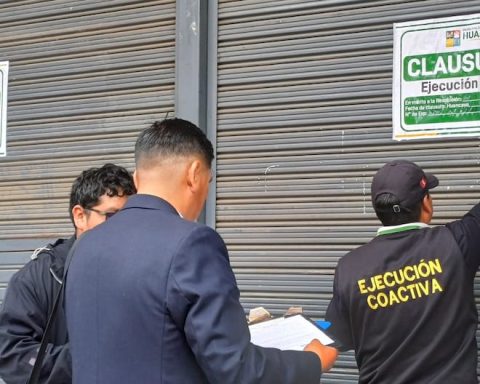The Santa Fe-Córdoba aqueduct, an emblematic work with a total cost of 441 million dollars, will have its first formal approach with those who will build it this December 1, when the envelopes with public tender offers for Section A of Phase 1 of the tasks, which will begin in the Santa Fe city of Coronda, located on the banks of the Paraná River.
These are the raw water intake and aqueduct works, the number 1 water treatment plant and pumping station, treated water pipelines and electricity supply, all with an official budget of $8,899 million (as of August 2022) and a deadline of work of 702 days.
The work, the first part of which will be financed with a credit of 50 million dollars from the Kuwaiti Fund for Arab Economic Development, will unite the cities of Coronda and Córdoba and will benefit more than 1.2 million inhabitants of 83 towns in both provinces .
The dimension of the work, compared by its magnitude and bi-provincial character with the Uranga-Sylvestre Begnis sub-fluvial tunnel that was inaugurated in 1969, can be appreciated in the distance of 383 kilometers from the Paraná River to the Mediterranean capital, just over 310 kilometers in a straight line.
Coronda is 19 meters above sea level and Córdoba at 389, for which six pumping stations were projected just to carry the water in the first stage, which reaches San Francisco, the first town on the Córdoba side through the Highway National 19, with an extension of 143.7 kilometers.

The Minister of Public Services of Córdoba, Fabián López, explained that the project was divided into two phases “for operational reasons” and into a total of eight blocks, which on the one hand will allow the staggered start-up of the water supply in the different localities and on the other, managing the sources of financing, with an average of 60 million dollars per block.
In addition to the Kuwait Fund for Arab Economic Development, which finances the first block of the first phase, there are negotiations with other Arab investment groups.
In the case of Santa Fe, since 1994 it has maintained relations with that Fund, initially for the construction of roads, but over time -and the passage of governments of different political stripes- the links intensified and led to works of sanitation and aqueducts.
For the first block, it is a loan with a term of 20 years, with a 4-year grace period and an annual interest rate of 3%, which will be administered by the Biprovincial Executing Unit.
stage 1 of the Santa Fe-Córdoba aqueduct
The Santa Fe government indicated that stage I of the work aims to supply drinking water to the towns in the center-west of Santa Fe and the center-east of Córdoba, which will benefit 54 towns and more than 412,000 inhabitants.
Thus, it will provide drinking water to the towns of Coronda, Gessler, María Juana, Sastre, López, Esmeralda, Colonia Belgrano, San Martín de las Escobas, San Jorge, Arocena, Barrancas, Cañada Rosquín, Carlos Pellegrini, Garibaldi, Las Bandurrias, Loma Alta, Piedmont, San Eugenio, San Vicente , San Fabián, Zenón Pereyra, Las Petacas, El Trébol, Casas, Crispi, Gálvez, Colonia Margarita, Traill, Campo Piaggio, Larrechea, Landeta, Frontera and Castelar.
The other side of the border will benefit San Francisco, Mortars, Brinkmann, Freyre, Devoto, Porteña, La Francia, Altos de Chipión, Colonia Marina, La Paquita, Colonia Vignaud, Seeber, Quebracho Herrado, Plaza San Francisco, Colonia Valtelina, Luxardo, Colonia Prosperidad, Las Varas, El Uncle, The Rods and Laspiur.
The continuity of the work foresees the arrival to the city of Córdoba, with the expansion of the universe of beneficiaries in almost a million more people.
Minister López expressed the gratitude of the Juan Schiaretti administration to the province of Santa Fe, “because going through an aqueduct to reach Córdoba is what will allow us to access an alternative source given the demand we have” .
His peer from Santa Fe, Silvina Frana, considered that this work “brings us together forever and is a clear sign for all Argentines that there is a path of collaboration, production, work, which generates hope for both provinces and will give us greater competitiveness”.
The national government is also involved as the president Alberto Fernández led the signing ceremony of the agreement in August at Casa Rosada through which the central administration formalized the guarantees for the financing, with the presence of the governor of Santa Fe, Omar Perotti, the deputy governor of Cordoba, Manuel Calvo, the foreign minister, Santiago Cafiero, the minister of economy, Sergio Massa, and the ambassador of Kuwait, Abdullah Ali. Alyahya.
At that meeting, Perotti reported that the financing of Kuwait, together with the support of the United Arab Emirates, Qatar, and Saudi Arabia, whose ambassadors were at the signing, “is a reflection of the other phases that we are going to seek financing and that we have started with all these countries to carry out the work”.


















